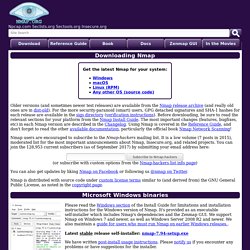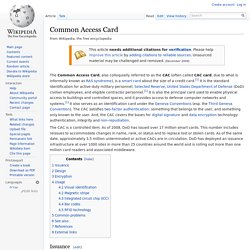

Kerberos: The Network Authentication Protocol. Recent News Old news is archived. 24 Feb 2015 - krb5-1.11.6 is released The krb5-1.11.6 source release is now available. 18 Feb 2015 - krb5-1.12.3 is released The krb5-1.12.3 source release is now available. 11 Feb 2015 - krb5-1.13.1 is released The krb5-1.13.1 source release is now available.

What is Kerberos? Kerberos is a network authentication protocol. The Internet is an insecure place. Some sites attempt to use firewalls to solve their network security problems. Kerberos was created by MIT as a solution to these network security problems. Kerberos is freely available from MIT, under copyright permissions very similar those used for the BSD operating system and the X Window System. In summary, Kerberos is a solution to your network security problems. $Id: index.html,v 1.215 2015/02/25 23:38:52 tlyu Exp $ All images and text on this page are copyright MIT. MIT Kerberos [ home ] [ contact ] Download the Free Nmap Security Scanner for Linux/MAC/UNIX or Windows. Nmap and Zenmap (the graphical front end) are available in several versions and formats.

Recent source releases and binary packages are described below. Older version (and sometimes newer test releases) are available from the dist directory (and really old ones are in dist-old). For the more security-paranoid (smart) users, GPG detached signatures and SHA-1 hashes for each release are available in the sigs directory (verification instructions). Before downloading, be sure to read the relevant sections for your platform from the Nmap Install Guide.
The most important changes (features, bugfixes, etc) in each Nmap version are described in the Changelog. Nmap users are encouraged to subscribe to the Nmap-hackers mailing list. You can also get updates from our Facebook and Twitter pages. Nmap is distributed with source code under custom license terms similar to (and derived from) the GNU General Public License, as noted in the copyright page. We have written post-install usage instructions. The Advantages & Disadvantages of Cognitive Biometrics. OAuth. For MediaWiki's (the software used by Wikipedia) OAuth support, see mw:Help:OAuth OAuth is an open standard for authorization, commonly used as a way for Internet users to log into third party websites using their Microsoft, Google, Facebook or Twitter accounts without exposing their password.[1] Generally, OAuth provides to clients a 'secure delegated access' to server resources on behalf of a resource owner.

It specifies a process for resource owners to authorize third-party access to their server resources without sharing their credentials. Designed specifically to work with Hypertext Transfer Protocol (HTTP), OAuth essentially allows access tokens to be issued to third-party clients by an authorization server, with the approval of the resource owner. The third party then uses the access token to access the protected resources hosted by the resource server.[2] OAuth is a service that is complementary to and distinct from OpenID. History[edit] OAuth 2.0[edit] Security[edit] Uses[edit]
Common Access Card. The Common Access Card, also colloquially referred to as the CAC (often called CAC card, due to what is informally known as RAS syndrome), is a smart card about the size of a credit card.[1] It is the standard identification for active-duty military personnel, Selected Reserve, United States Department of Defense (DoD) civilian employees, and eligible contractor personnel.[1] It is also the principal card used to enable physical access to buildings and controlled spaces, and it provides access to defense computer networks and systems.[1] It also serves as an identification card under the Geneva Conventions (esp. the Third Geneva Convention).

The CAC satisfies two-factor authentication: something that belongs to the user, and something only known to the user. And, the CAC covers the bases for digital signature and data encryption technology: authentication, integrity and non-repudiation. The CAC is a controlled item. As of 2008, DoD has issued over 17 million smart cards. Issuance[edit]